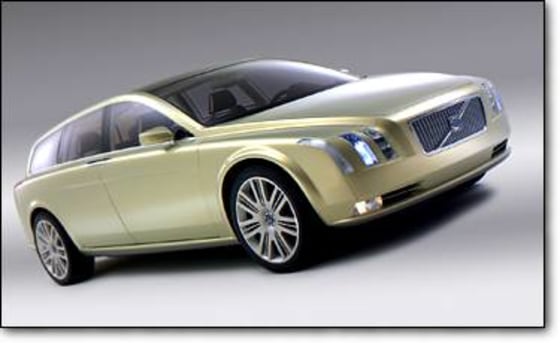Volvo chief designer Peter Horbury saw the inside of his own concept car for the first time at the Geneva Motor Show last month.

IN THE PAST, Horbury would have had his hands all over one of his creations as it was coming to life in the studio. But the futuristic Volvo station wagon was designed in two places—Spain and Sweden. And Horbury was so busy overseeing the car’s exterior at Volvo’s headquarters, he didn’t have time to troop down to Barcelona. Thanks to advanced software, Horbury could flip open a laptop and be in two places at once, fly-specking everything about the car’s sleek aluminum and leather interior, even if he couldn’t actually sit in it. “We knew here,” Horbury says from his Goteborg office, “what was going on all the time in Barcelona.”
The car designer’s studio, long a sanctuary of old-world craftsmanship, is going digital. In the first century of car design, da Vinci would have felt right at home. Start with a drawing, then sculpt a clay model, followed by wood and metal prototypes. Since each step is the domain of a different artisan, the result is an approximation of the original vision. New computer software is ending this game of industrial telephone. Digital design keeps the original inspiration intact, while getting fresh points of view from car stylists anywhere around the world.
Using software called Alias, designers in Sweden and Detroit can change the curve of a fender or the shape of a headlight in —real time. And if they want the big picture, they don 3-D goggles in special theaters that can project a full-size image of the car in two places at once. When Volvo’s European designers put down their laser pens for the day, their counterparts in Irvine, Calif., pick up their pens and keep going. “We have almost 24-hour design,” says Horbury. Cars also move more cleanly from screen to showroom because computer-generated designs fit together more precisely. And by eliminating the laborious clay modeling, Horbury says, the digital process saves Volvo at least $100 million on each car. The Geneva station-wagon concept came together in just seven months—half the time of a typical show car.
So what’s missing from this high-tech studio? “The smell of the clay,” says Horbury. He’s not entirely joking. Digital design’s biggest drawback is its lack of realism. So virtual-reality gloves are being developed with vibrating sensors that simulate a car’s shape as cyberstylists run their hand along a 3-D image.
Eventually, digital design could make car-styling studios obsolete. Some old-school stylists contend that traditional methods will always be necessary to give a design time to mature. But young designers are ready to do their jobs anywhere they can flip open a laptop. Some executives at Volvo’s parent, Ford, have even contemplated putting a design studio inside an 18-wheeler. The idea is to put designers closer to the streets where their creations come to life. “We have the freedom to operate anywhere,” says Horbury. “You could work from your car.” Forget about clay. The scent of creation in the car business could soon be the woodsy air freshener dangling from the rearview mirror.
© 2003 Newsweek, Inc.
